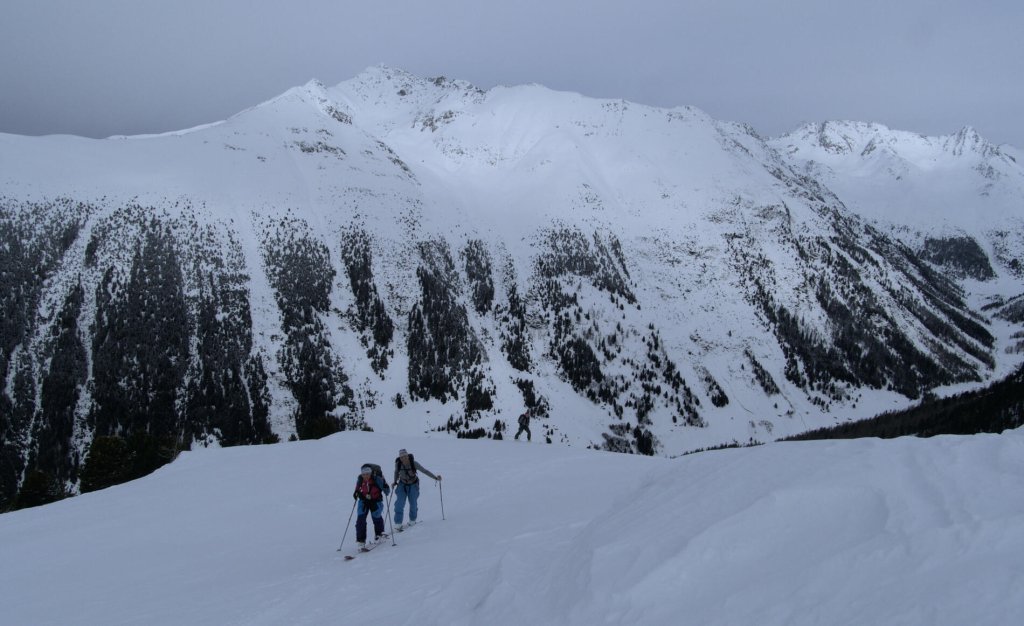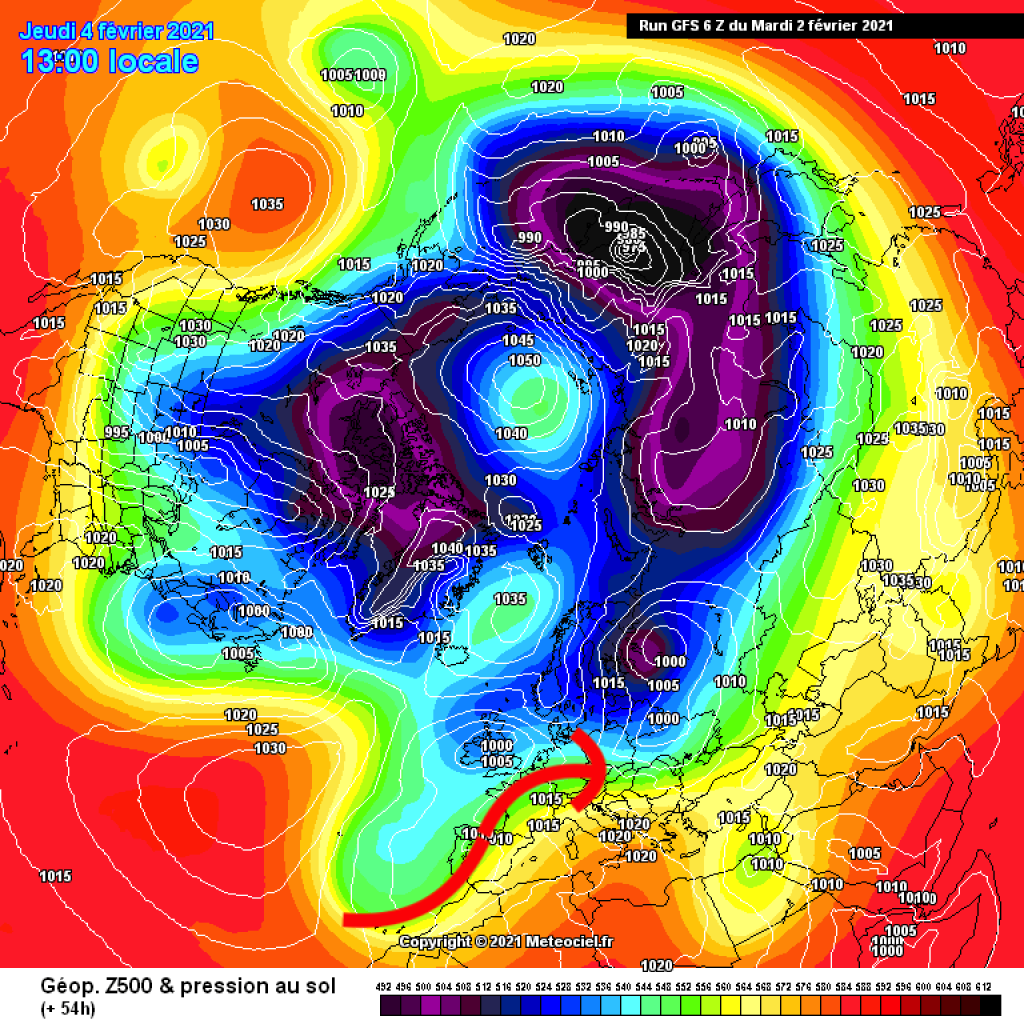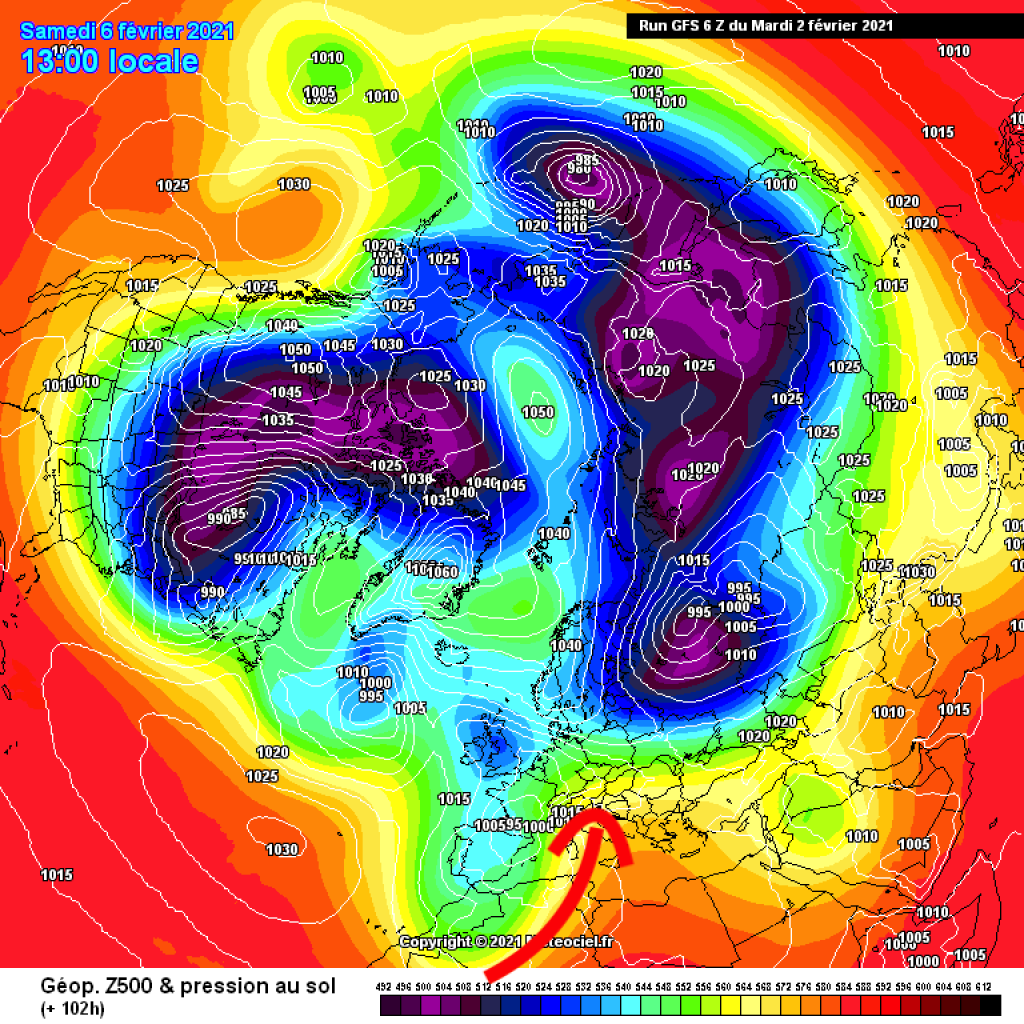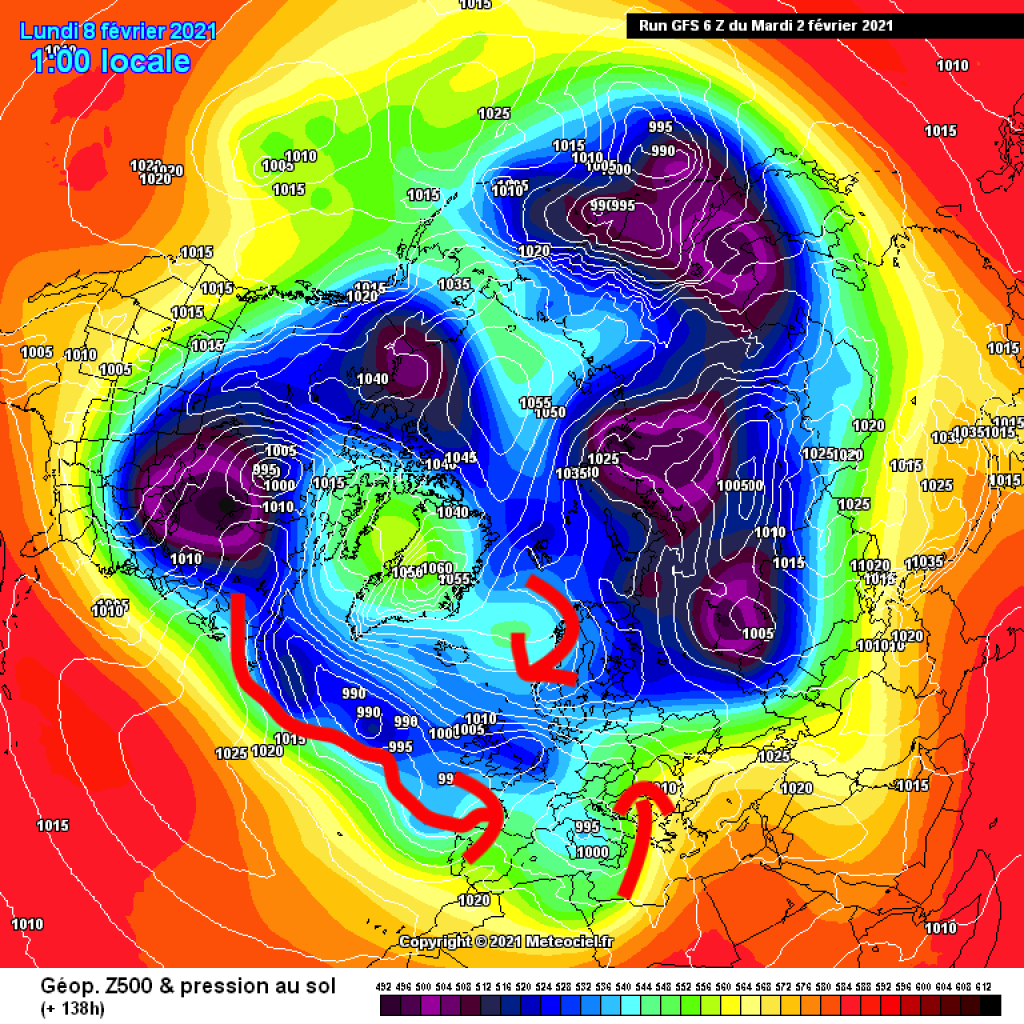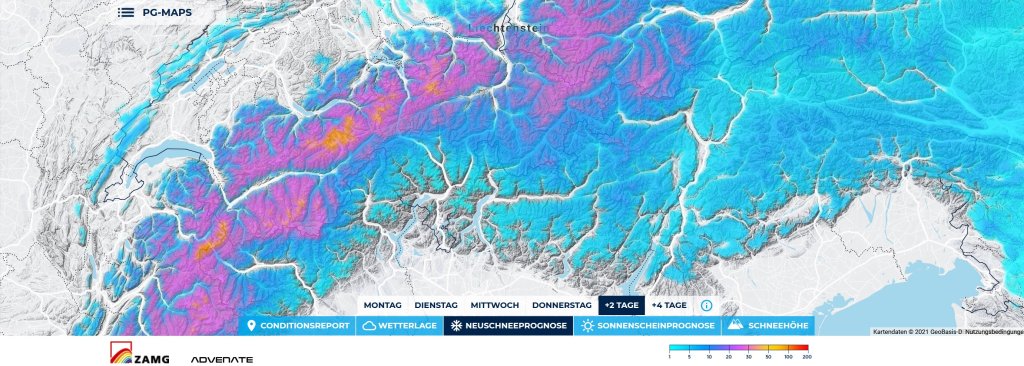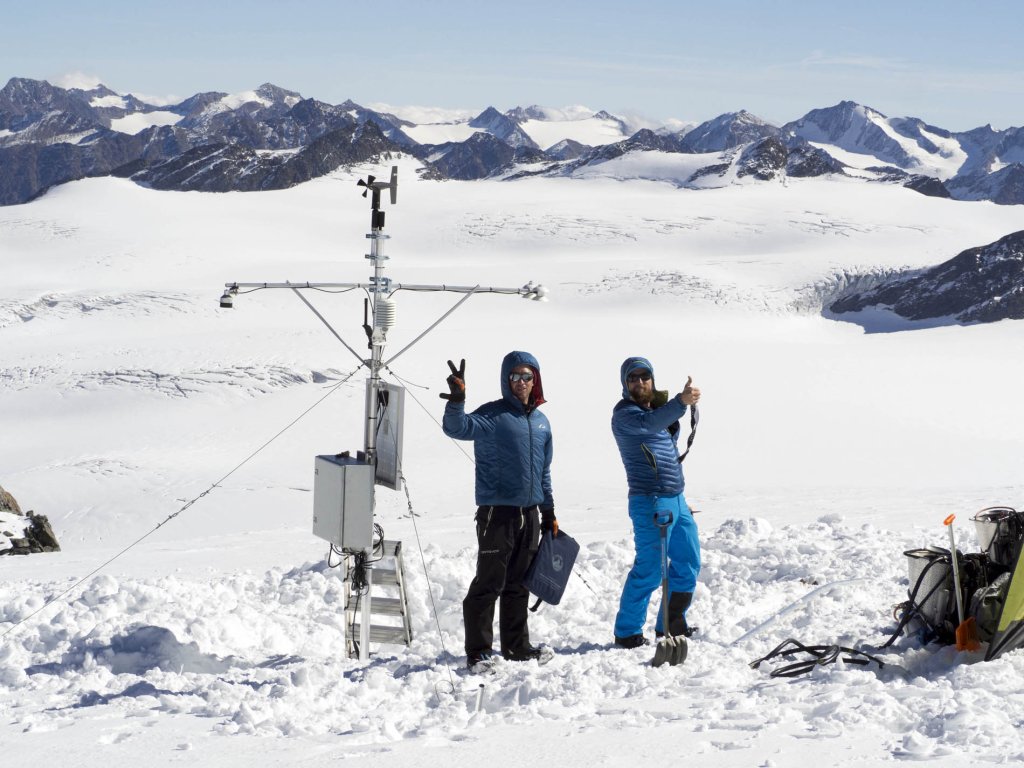Current situation and outlook
The Alps are located in a strong westerly to south-westerly current, which will be decisive for our weather over the next few days. Today, Wednesday, the cold front of an Atlantic low arriving from the west will cause rain, especially on the northern slopes of the Alps, see also the current PowderAlert. As you can read there in more detail, the snow line is climbing higher and higher and in many regions you can expect rain up to over 2000m. As a result, the current will turn a little more SW and it will be a little warmer again, but also sunnier. Thursday morning will be very sunny, especially in the eastern Alps, with a little more cloud towards the west, which will later spread eastwards. However, it will remain dry almost everywhere, albeit windy - and of course much too warm for the time of year. Friday will be similar in principle, but cloudier and with fewer windows of sunshine.
